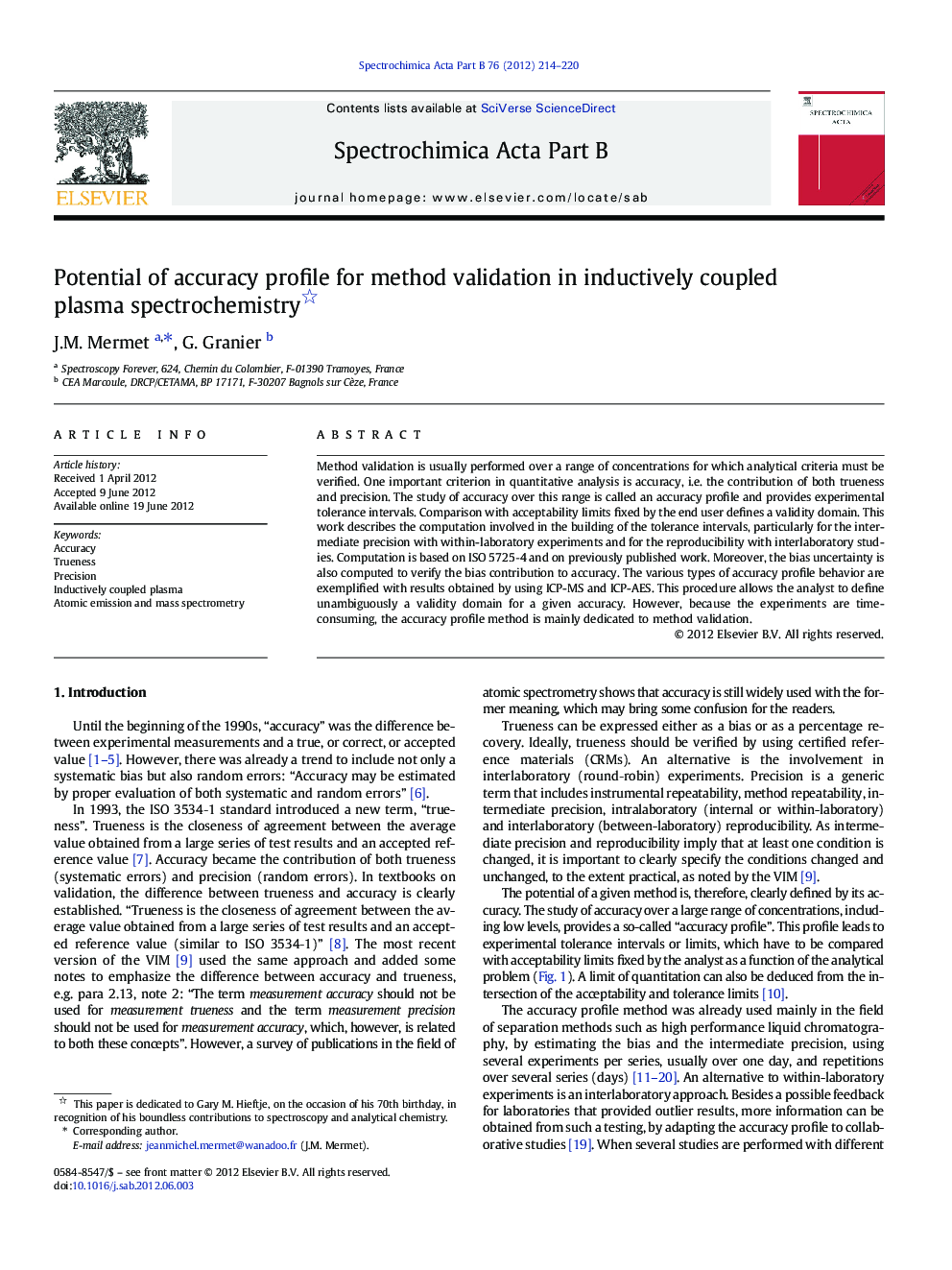| Article ID | Journal | Published Year | Pages | File Type |
|---|---|---|---|---|
| 1239823 | Spectrochimica Acta Part B: Atomic Spectroscopy | 2012 | 7 Pages |
Method validation is usually performed over a range of concentrations for which analytical criteria must be verified. One important criterion in quantitative analysis is accuracy, i.e. the contribution of both trueness and precision. The study of accuracy over this range is called an accuracy profile and provides experimental tolerance intervals. Comparison with acceptability limits fixed by the end user defines a validity domain. This work describes the computation involved in the building of the tolerance intervals, particularly for the intermediate precision with within-laboratory experiments and for the reproducibility with interlaboratory studies. Computation is based on ISO 5725‐4 and on previously published work. Moreover, the bias uncertainty is also computed to verify the bias contribution to accuracy. The various types of accuracy profile behavior are exemplified with results obtained by using ICP-MS and ICP-AES. This procedure allows the analyst to define unambiguously a validity domain for a given accuracy. However, because the experiments are time-consuming, the accuracy profile method is mainly dedicated to method validation.
► An analytical method is defined by its accuracy, i.e. both trueness and precision. ► The accuracy as a function of an analyte concentration is an accuracy profile. ► Profile basic concepts are explained for trueness and intermediate precision. ► Profile-based tolerance intervals have to be compared with acceptability limits. ► Typical accuracy profiles are given for both ICP-AES and ICP-MS techniques.
